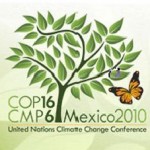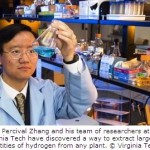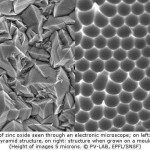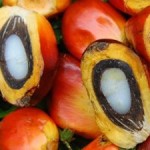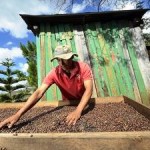 Modern commercial buildings consume around 30-40% of energy that primarily goes into air conditioning. It is estimated that by 2025, commercial buildings will use more energy than any other category of “consumer”. Besides this, buildings consume 40% of the world’s current output of raw materials, which is about 3 billion tones annually (Source: IBM), adding significantly to the overall ecological footprint.
Modern commercial buildings consume around 30-40% of energy that primarily goes into air conditioning. It is estimated that by 2025, commercial buildings will use more energy than any other category of “consumer”. Besides this, buildings consume 40% of the world’s current output of raw materials, which is about 3 billion tones annually (Source: IBM), adding significantly to the overall ecological footprint.
Cooling these buildings by using innovative technologies has been in vogue for a long time. Though over the last 30 years, there have been significant improvements in energy efficiency of air conditioning equipment, these gains pale away in the wake of the rapid pace of urban development and the mushrooming of new big cities across the world.
Around 40% of commercial floor space is expected to be air conditioned by 2020, compared to 10% in 1994, in UK alone. This rise in energy consumption has a direct impact on greenhouse gases in the atmosphere responsible for global warming and also raises the energy bills as energy prices head northward. In a typical office, air conditioning can account for more than 30% of annual electricity consumption. (Source: Carbon Trust)
As temperatures hit record high in many cities across the world this year, the need to cut down on emissions and to live sustainably cannot be highlighted more. The traditional air conditioner might have undergone a complete transformation in terms of its technology and energy efficiency parameters, but using innovative and sustainable ways of meeting the cooling requirements would be needed to address this challenge.
 The East Gate Centre in Zimbabwe is an excellent example of how we can learn from Nature and use its principles in building design. The East Gate Centre is a shopping centre and office block in central Harare. It provides 5,600 m² of retail space, 26,000 m² of office space and parking for 450 cars.
The East Gate Centre in Zimbabwe is an excellent example of how we can learn from Nature and use its principles in building design. The East Gate Centre is a shopping centre and office block in central Harare. It provides 5,600 m² of retail space, 26,000 m² of office space and parking for 450 cars.
The unique feature of this building is that it is modeled after the self-cooling mounds of termites known as Macrotermes Michaelseni. The building uses the same cooling and heating principles as used by the termites. The termite – Macrotermes Michaelseni – builds mounds to harvest fungus deep inside its mounds for which a steady temperature of 31° is essential, but a challenge in the hot African Sun.
 The termites maintain a network of holes in the mounds that are meticulously opened and closed in a regulated manner throughout the day to allow inflow of cool air and to vent out warm air at different times of the day. This process helps in maintaining a constant temperature of about 31° inside their nests while the external temperatures vary from 3° at night to 42° during the day. The termites seem to have naturally adapted to these harsh environmental circumstances.
The termites maintain a network of holes in the mounds that are meticulously opened and closed in a regulated manner throughout the day to allow inflow of cool air and to vent out warm air at different times of the day. This process helps in maintaining a constant temperature of about 31° inside their nests while the external temperatures vary from 3° at night to 42° during the day. The termites seem to have naturally adapted to these harsh environmental circumstances.
This learning from Nature has helped developers to select appropriate design, identify proper orientation and choose building materials that would help them mimic the termite mounds to near perfection. The exposure of the building’s external walls to sun’s rays was kept to a minimum. Insulation of windows was done to prevent heating. The walls of the building were made from materials having high specific heat capacity so that they do not transmit heat to the interiors of the building.
Today, the East Gate Centre is known for its green architecture and ecologically sensitive adaptation. It does not use air conditioners and, therefore, has no expense on buying costly equipment and maintaining it year after year. Over the last five years, the building has consumed only 10% of energy that conventional buildings of its size would use. It has saved 3.5 million dollars in air conditioning alone in the first five years.
 Nature has a unique solution to every unique problem. The challenge is that the solutions might not be exactly replicable in every situation. In the case of East Gate Building, the climatic conditions in Zimbabwe were favorable for the termite mound-based design. Because of its altitude, Harare has a temperate climate despite being in the tropics, and the typical daily temperature swing is 10-14°C. This makes a mechanical or passive cooling system a viable alternative to artificial air conditioning. The external temperatures fluctuate between 3°C at night to 42°C during the day making it possible to generate the draft currents inside the chimneys to vent out warm air out of the buildings. These draft air columns are created by the temperature difference between cool air and warm air. When cool air is allowed to gush in from the bottom of the building, the warm air is vented out through roof-top chimneys.
Nature has a unique solution to every unique problem. The challenge is that the solutions might not be exactly replicable in every situation. In the case of East Gate Building, the climatic conditions in Zimbabwe were favorable for the termite mound-based design. Because of its altitude, Harare has a temperate climate despite being in the tropics, and the typical daily temperature swing is 10-14°C. This makes a mechanical or passive cooling system a viable alternative to artificial air conditioning. The external temperatures fluctuate between 3°C at night to 42°C during the day making it possible to generate the draft currents inside the chimneys to vent out warm air out of the buildings. These draft air columns are created by the temperature difference between cool air and warm air. When cool air is allowed to gush in from the bottom of the building, the warm air is vented out through roof-top chimneys.
Such copying of Nature’s time-tested patterns and strategies to seek sustainable solutions to help mankind is known as Biomimicry. Nature has vast knowledge embedded in its various life forms that have evolved and adapted over millions of years. If we can learn more about such principles, we can live closer to Nature without harming it.
About “Learning from Nature” Series
ThinktoSustain.com keeps track of innovations for sustainability from all walks of life. Nature has immense knowledge embedded in various life forms. We believe that Learning from Nature can help us solve many problems and live sustainably. The “Learning from Nature” series presents such innovations with a view to trigger innovative thought process.
If you or your organization have demonstrated such sustainable innovations, do write to us (giving a brief description) at editor@thinktosustain.com.
© 2012 ThinktoSustain.com. All Rights Reserved.

